Last-Minute NYC Holiday Gift Guide 🎁
We’ve created a holiday gift guide with presents for the intrepid New Yorker that should arrive just in time—


The East Harlem neighborhood just north of the Upper East Side, also known as El Barrio, is one of the city’s most vibrant areas. It has plenty to offer in terms of history, art, culture and food, with a tight knit Latino community that keeps the area awash with culture.
What was an Italian neighborhood in the 1800s and early 1900s evolved when it welcomed a wave of Puerto Rican emigrants in the 1920s, shaped by the “Nuyorican” (New York plus Puerto Rican) community that would give it its “El Barrio” name. Vestiges of its Italian past remain, but the roots that created Spanish Harlem make this an incredibly vivid visit with its street art and colors, while the effervescent Spanish culture that has melded so uniquely with New York City keeps you on your toes, making you want to continue to come back.
We’re taking you through East Harlem with these 20 places in our Untapped Cities Guide, though understand that there’s so much more to this area that requires simply wandering and absorbing the area without a guide once you’ve covered your basics.

One of the most prominent figures during the Harlem Renaissance, acclaimed poet and author Langston Hughes resided on the top floor of his Harlem brownstone, between the years 1947 to 1967. Located on 20 East 127th Street, the three story building is listed on the National Register of Historic Places.
In an effort to preserve the space, over 800 people donated to nonprofit arts collective, “I, too,” which now leases the houses. In an effort to preserve Langston Hughes’s legacy, the collective hosts educational and artistic programming, including writing workshops, “creative conversation series,” poetry salons and more.

The Harlem Courthouse is one of the many treasures of East Harlem. This Gothic-Romanesque Revival structure was designed and built between 1891 and 1893 by the architectural firm Thom & Wilson, who also designed the Moorish style Hampton Apartments on Perry Street in Greenwich Village.
The structure was used by the Municipal and Magistrate’s Courts, and was one of the city’s earliest county seats. Much of the building was restored during a renewal project, but the jail and former living quarters were not part of the restoration program. The Harlem Courthouse was designated a New York City Landmark in 1967 and added to the National Register of Historic Places in 1980.
The Harlem Courthouse is now in use as the Harlem Community Justice Center where family, housing and small claim civil cases are heard. There is also some office space for the NYPD. It is not open to the public unless you have business there. But fortunately for you, there is a virtual tour with the New York Correction History Society.

Located on 1680 Lexington Avenue, The Julia de Burgos Performance & Arts Center (JdBPAC) is a civic space dedicated to Latino artistic, cultural and educational programming. With a mission to enhance the quality of life and “enlighten the diverse members of the East Harlem community and beyond,” the center various hosts events throughout the year, including (but not limited to) exhibits, performances and film screenings. The Julia de Burgos Latino Cultural Center includes two main venues: the 164-seat Theater and the Multi-Purpose Pavilion, which hosts 200 guests. In addition to these main facilities, it offers Studios A and B, which can be rented out or used as space to host small meetings and rehearsals.
 Arden Sherman, Curator, Hunter East Harlem Gallery
Arden Sherman, Curator, Hunter East Harlem Gallery
Serving as another multidisciplinary arts space, the Hunter East Harlem Gallery on 2180 3rd Avenue at 119th Street is located on the ground floor of Hunter College’s Silberman School of Social Work. Since its establishment in 2011, the gallery has provided a space for art exhibitions and public events that not only address topics relevant to the East Harlem community, but also foster collaborations at Hunter College.
The gallery specifically focuses on artists participating in socially engaged projects, public interventions and/or community programs. In keeping to its community-minded mission, all exhibitions have been free and open to the public since the gallery’s inception.
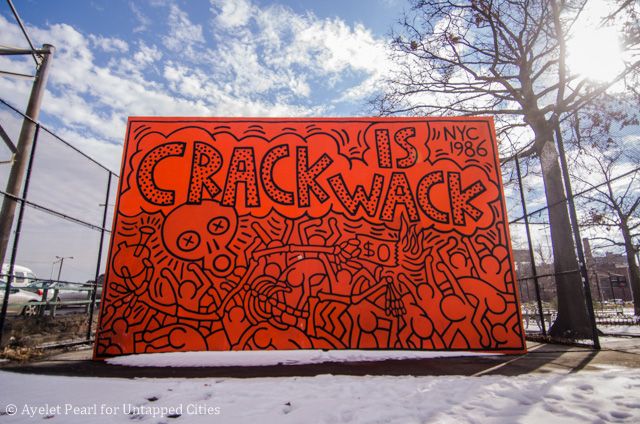
In the late 1980s, just as the crack-cocaine epidemic gained momentum urban areas including New York City, artist Keith Haring stumbled across a very reasonable way to spread an anti-drug message to the demographic that needed it most: Why not paint a playground?
Haring painted his black-on-orange CRACK IS WACK mural on both sides of a brick handball wall in an East Harlem playground near East 128th Street and Second Avenue, officially known as the “Crack is Wack Playground.”
In 2007, the wall was restored by a group of artists and is still on view today. While not a classic park as the remaining on this list, it is worth the visit as it’s one of the few remaining Keith Haring pieces thought to still survive in the city.
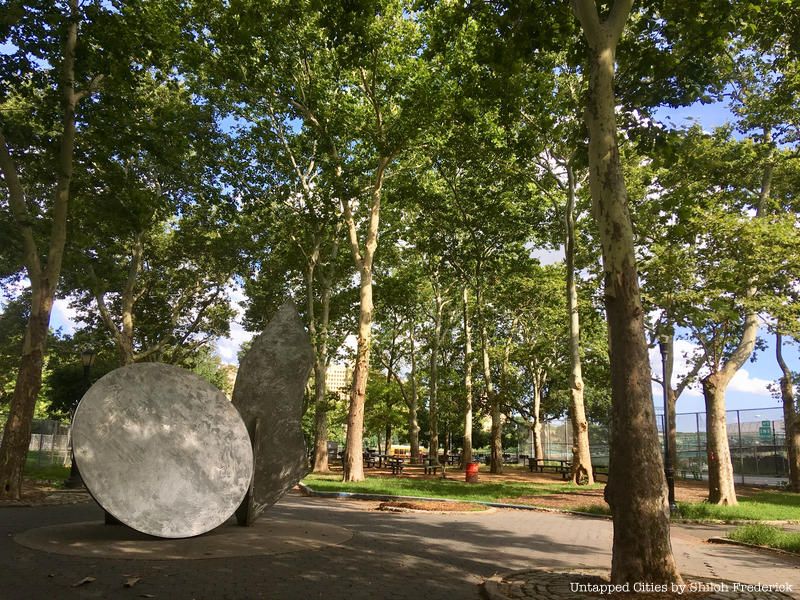
Thomas Jefferson Park, named after the third president of the United States has been open serving its local community since 1905. Complete with a track, basketball and baseball courts, soccer fields, and large playground. The recreation center offers many amenities including fitness rooms, classes, and after school programs for kids.
In the summer months, there is an outdoor pool with ground complete with grills and picnic tables for enjoyable summer gatherings. The park is located at 1 Ave and FDR Dr, between East 111 St and East 114 St.
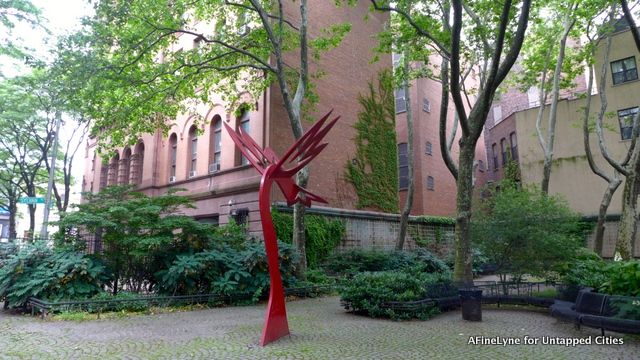
Sculpture by Artist Jorge Luis Rodriguez in 1985
Located at the corner of East 120th Street and Sylvan Place, the land was originally acquired by the City in 1929 for a public bath. It went unused until 1938 when it became an informal sitting park, and was handed over to the Parks Department jurisdiction in 1945.
The Harlem Art Park is part of the Historical Signs Project. When you enter the parking lot adjacent to the Harlem Courthouse building, you will notice a gated garden on the south side, which can only be reached from 120th Street. Upon entering, you will see Jorge Luis Rodriguez’s sculpture “Growth,” the first project completed by the Percent for Art Program which uses one percent of the Department of Cultural Affairs specific capital project budgets to commission works of art.
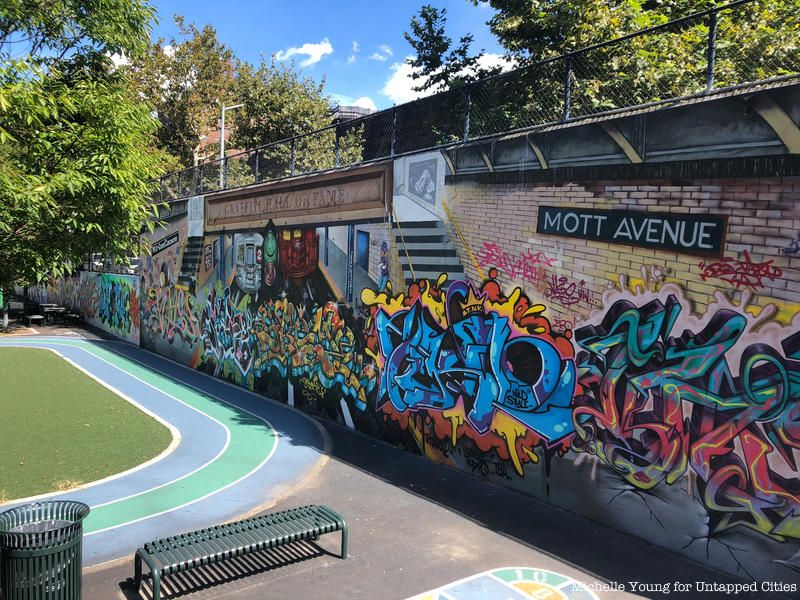
The Graffiti Hall of Fame has been one of the city’s premier street art locations for the past 30 years. Found on East 106th Street between Madison Avenue and Park Avenue, the artwork runs along Park Avenue outside the Jackie Robinson Educational Center as well as in the playground, which runs along 106th Street.
Free and open to the public, this famous landmark not only protected, but also cherished by the community and have become a destination for tour groups as well as a blank canvas for street artists several times a year. Founded in 1980 by Ray Rodriguez (aka “Sting Ray”), this is a definite must-see in East Harlem.
If you’re interested in more street art, there’s plenty more to check out in East Harlem. There’s so much public art adorning the walls of El Barrio that you could give yourself a walking tour of just that. From Hank Prussing’s “Spirit of East Harlem” mural to El Mac and Celso Gonzalez work from the Monument Art Project, there’s more than enough to keep you engaged with what the neighborhood has to offer.
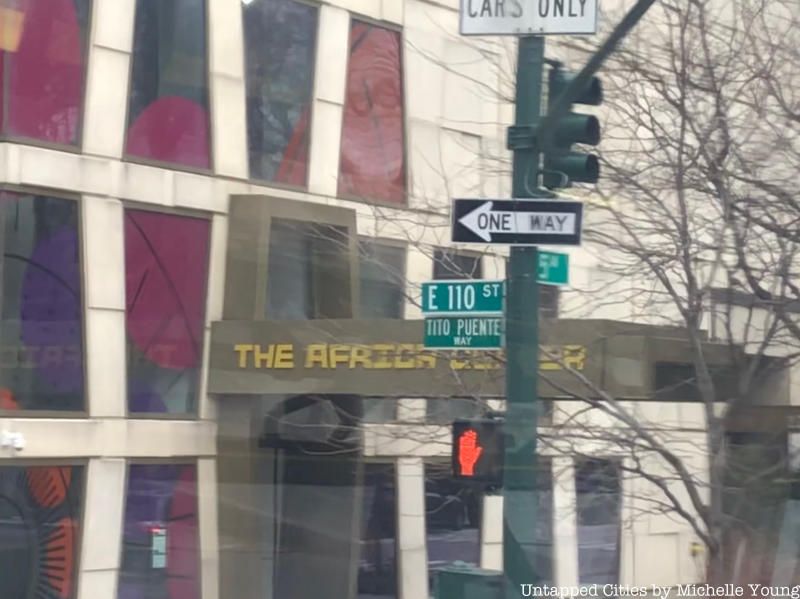
Tito Puente left his mark on Spanish Harlem and New York City as “the Mambo King,” ”the King of Latin Jazz,” and ”El Rey del Timbal.” Growing up in Spanish Harlem in the 1930s and ’40s, he took in the vibrant Latin sounds that filled the neighborhood, emanating from its center at 110th Street and Fifth Avenue.
A pioneer in mixing various musical styles with Latin sounds, particularly with jazz, Puente left a legacy that emanated to every part of the city. When he passed away on May 31, 2000, the world mourned his loss. To celebrate the mark he left on Latin music in Spanish Harlem, 110th Street from 5th Avenue to FDR Drive was dedicated Tito Puente Way a few months after his death on August 2.
Mews are former 19th century stable yards that end in typically in an alley. Today, the city has a whole slew of mews that have been landmarked and protected because of their historical significance, including the Washington Square Mews, Verandah Place Mews, and Sylvan Terrace in upper Harlem. Sylvan Court is not on that list of protected mews despite local advocacy from residents to make them so.
The Sylvan Court Mews is on 121st Street between Lexington and Third Avenues, just north of the Harlem Courthouse. Gothamist and a few other outlets have described that the deteriorated state of the mews was ultimately what made Landmarks unsure of the areas historical designation. Nevertheless, mews are always a wonderful piece of old New York that deserve a visit, so make sure you add Sylvan Court to that list.
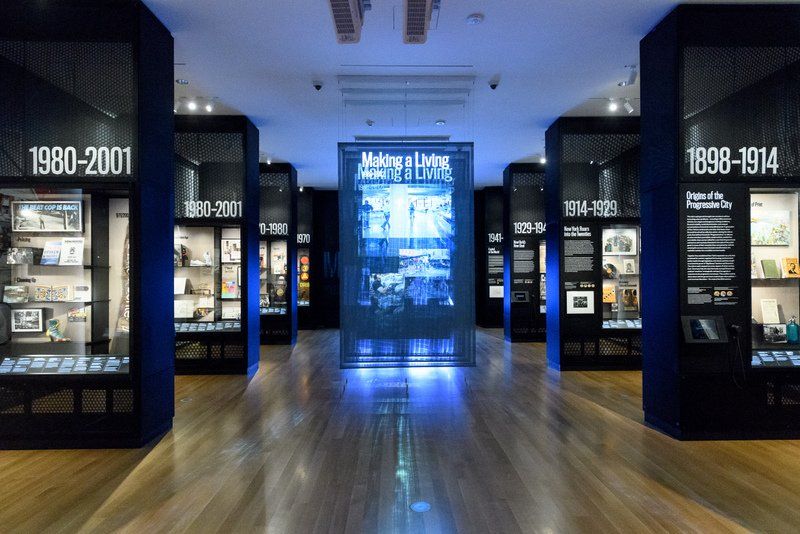
World City gallery. One of three in the New York at Its Core exhibition. Photo by Filip Wolak courtesy MCNY.
Located the top of Museum Mile at 103rd Street and Fifth Avenue is the Museum of the City of New York. With the only museum that has a comprehensive, 400-year history of New York City from its Dutch origins to the interactive Future City Lab examining the future of the city, the MCNY also offers commentary on present-day issues while dutifully and easily engaging with the past history that has shaped the city today.
Be sure to check out their new exhibition Beyond Suffrage which takes a look at New York women in politics over the last century. With a wide breadth of programming for children to adults, the Museum makes sure you are a well informed native or visitor of the city. It’s open every day of the week from 10 am to 6 pm.
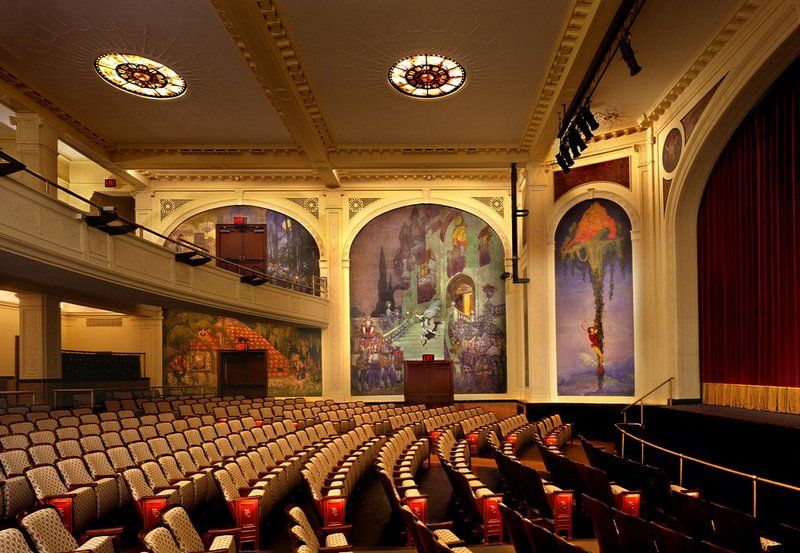
Photo courtesy El Museo del Barrio
Directly next door, just one block up on 104th Street and 5th Avenue is El Museo del Barrio. The city’s leading Latino cultural institution, it brings together a beautiful melding of landscape of Latino, Caribbean, and Latin American cultures to pique the interest of all backgrounds.
A cornerstone of the El Barrio, the Museum serves its Latino community well by celebrating the culture that often found itself ignored in mainstream museums. With a collection that spans over 800 years of Latin American, Caribbean, and Latino art, it is a valuable resource to the city, but also lets out-of-town visitors explore work not typically seen in New York City museums.
While El Museo’s galleries will be closed until Summer 2018, they continue to hold a variety of programs and are still open to visitors Wednesday to Thursday from 12:00 pm to 4:00 pm, and Friday from 9:00 am to 5:00 pm.
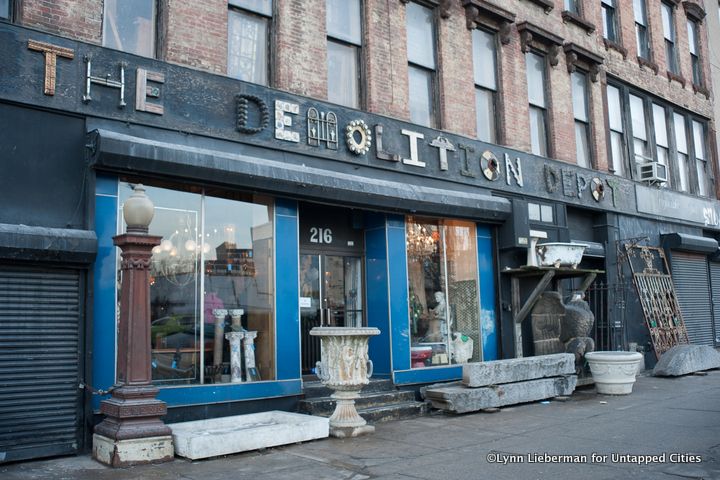
The Demolition Depot entrance on East 125th Street
On a stretch of 125th Street in East Harlem stands a funky four-story building called the Demolition Depot. Located at 216 East 125th Street between Second and Third Avenues, this is a building chock-filled with organized treasurers. From the minute you step through the door, it’s as if you are transported back in time. A real ‘Age of Innocence’ setting that will make your checkbook and your imagination run wild.
The store is like a salvage shop but full of the most wonderful object salvaged from places like the Commodore, Biltmore and Vanderbilt Hotels, the Audubon Ballroom, the Loew’s Delancey Theater, the Helen Hayes Theater, and the New York Life Insurance Building. Here you are almost certain to find unique treasures unlike anywhere else in the city.
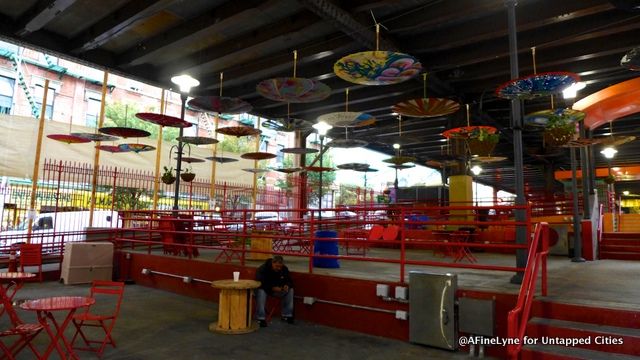
Sitting beneath elevated Metro North railway tracks between 111th Street and 116th Street on Park Avenue, La Marqueta brings together the very best of East Harlem. The vibrant marketplace not only offers food and a variety of diverse shops, but also live music and occasional cultural events. It’s located in the heart of historic East Harlem — and due to its prominence, La Marqueta has been called “the most visible symbol of [the neighborhood],” according to The New York Times.
Mayor LaGuardia originally opened the space as the Park Avenue Retail Market in 1936. However, as East Harlem transformed into Spanish Harlem in the 1930’s, 40’s and 50’s, the market eventually turned into “La Marqueta,” where ethnic foods, traditional medicines and dry goods were sold. At one point, over 500 vendors occupied the bustling market.
It has since reduced in size, prompting the City Council and the NYCEDC to revive the market by making way for additional retail space and fully-equipped kitchen facilities. In 2011, HBK Incubates — a food business incubator operated by Hot Bread Kitchen — opened at La Marqueta.
If you’re craving authentic Mexican cuisine, Cascalote Latin Bistro, located on 2126 2nd Avenue is the place to go. Gothamist referred to it as the best restaurant in Spanish Harlem, where every meal served “feels like the best version of a home-cooked dinner that you could possibly get.”
Its authenticity can be attributed to the fact that the restaurant is a family-run operation, spearheaded by chef/owner Julian Hoyos. It’s a small, inconspicuous spot that offers a range of eats from Enchiladas (with rice and beans) to Tacos Al Pastor.
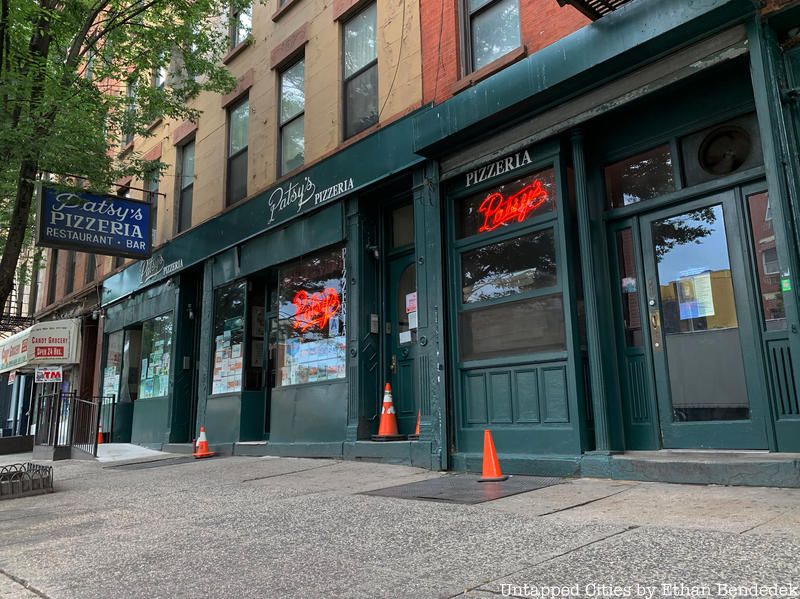
Patsy’s Pizzeria on 118th Street and 1st Avenue has been around since 1933, serving up some of New York’s most iconic pizza. While Patsy’s has many locations around the city today, the one in East Harlem remains an institution, with an origin hailing back to the areas Italian roots founded by Italian immigrant newlyweds Pasquale ‘Patsy’ and Carmella Lancieri.
Not long after it opened, the place began attracting big names. Frank Sinatra, Dean Martin and Tony Bennett would become regulars while its location off the 4-5-6 line made it a quick stop from Yankee Stadium from where Patsy’s welcomed baseball legends like Joe Dimaggio and Yogi Berra, and later in the 1970s would be Francis Ford Coppola late-night haunt.
Perhaps its most well served group of people are the residents of East Harlem. Not only did they serve delicious brick-oven pizza, but Patsy’s would donate food and space to many community groups, while also providing a platform for local politicians to connect with their communities.
This neighborhood landmark continues to stand, despite having to give up a section because of rent increase. You’d be remiss to skip a slice from this historic gem.
Following a meal at Cascalote Latin Bistro or Patsy’s Pizzeria, make a beeline over to Camaradas El Barrio (2241 1st Avenue), described as a “funky” Caribbean/Puerto Rican gastro-pub that is decorated with local artwork. In addition to offering eats like Mofongo, empanadas and Cuban sandwiches, Camaradas offers a selection of wine, beers from around the world and sangria.
It’s also notable for its excellent live music and showcases of local talent, including visual artists and photographers. Each month, there’s a new installation that is on view — so make sure to drop by for drinks, food and an episode of sporadic dancing with intoxicated strangers.
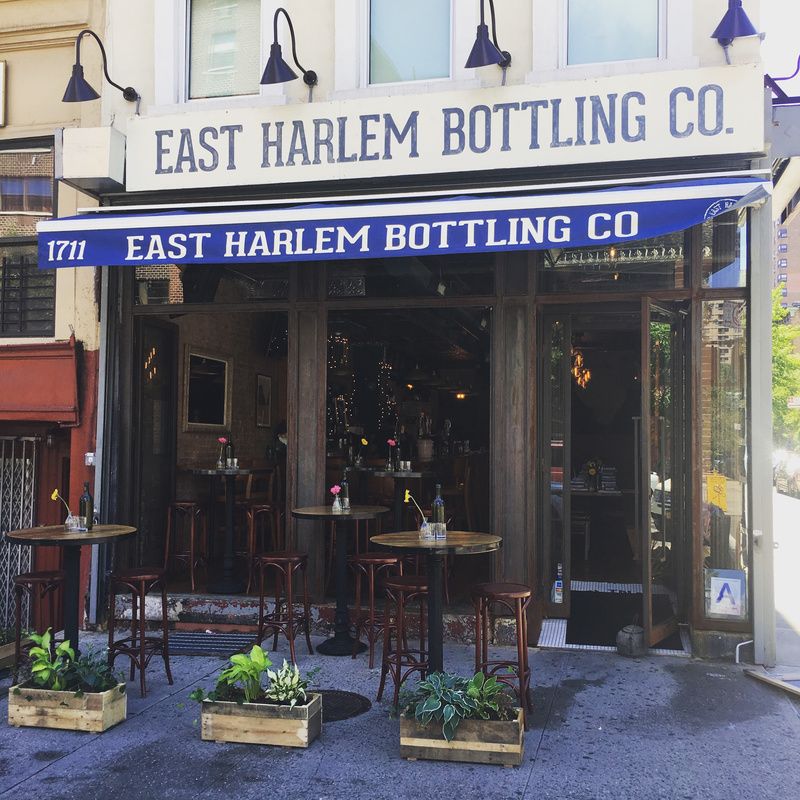
Photograph Courtesy of East Harlem Bottling Co.
On the corner of 107th Street and Lexington Avenue sits East Harlem Bottling Co. A wonderful place for an after-work or post-neighborhood exploration drink, it boasts a wide array of beers to make everyone happy, including their own local brewed beers.
Just a few blocks from the Central Park Conservatory Gardens, the Museum of the City of New Yorker, and El Museo del Barrio, it’s a great place to end a day of exploring.

We already briefly mentioned Hot Bread Kitchen, the anchor tenant selected to run the culinary incubator inside La Marqueta. HBK Incubates, which is comprised of a shared commercial kitchen space, a culinary community and a business support program, officially launched in early 2011 to support the growth of start-up businesses and to bring food entrepreneurship back into the once thriving, historic market.
Inside, HBK Almacen, Hot Bread Kitchen’s retail stand, offers global breads, coffee and various breakfast/lunch items. The bakery’s popularity is partly attributed to the fact that traditional baking techniques, practiced around the world, are utilized. In addition, no preservatives or artificial flavors are added to any of the breads. Read more about the space here.
Next, head over just a few blocks and explore with our 25 Must Visit Spots in Harlem, NYC.
Subscribe to our newsletter